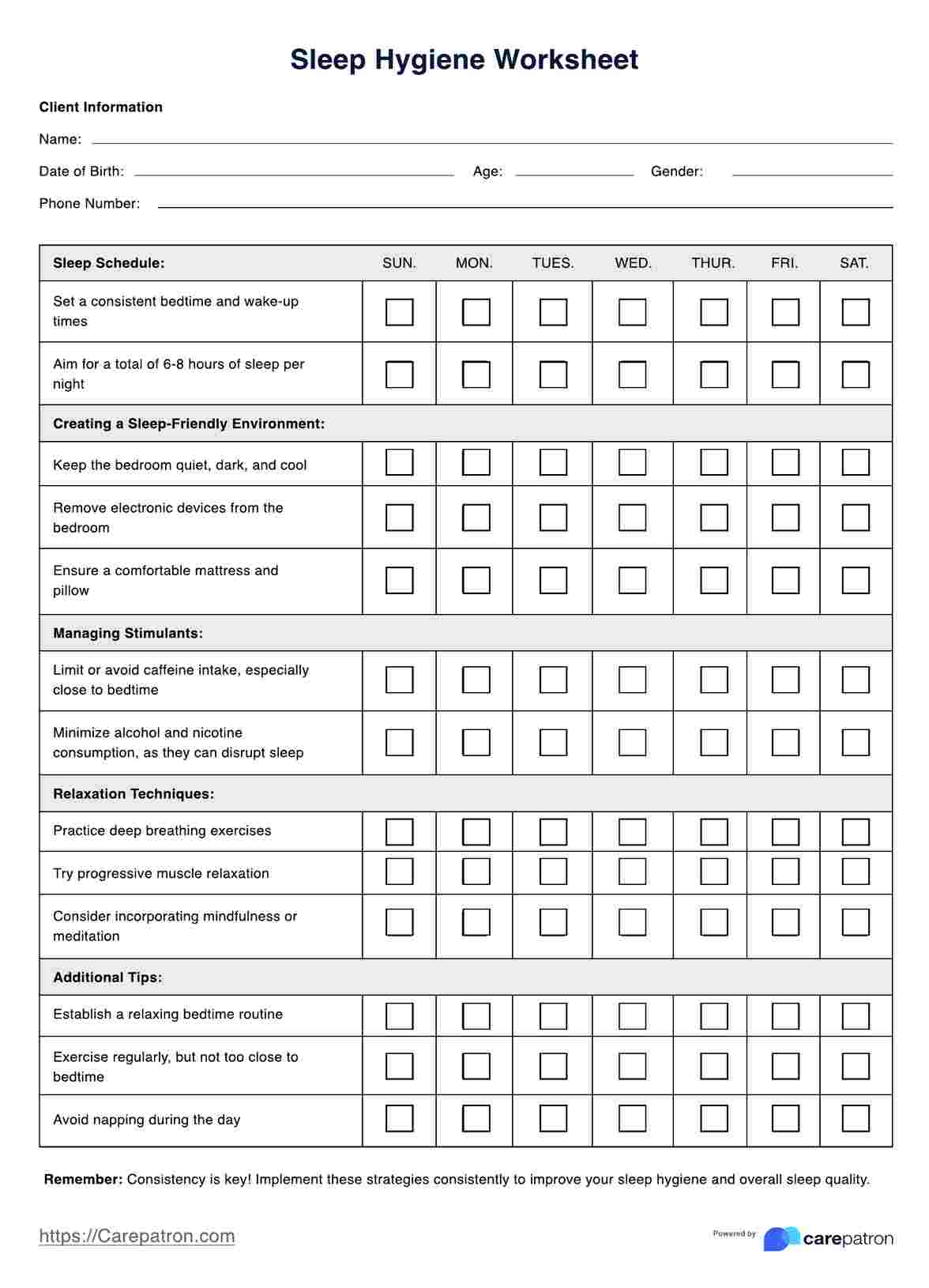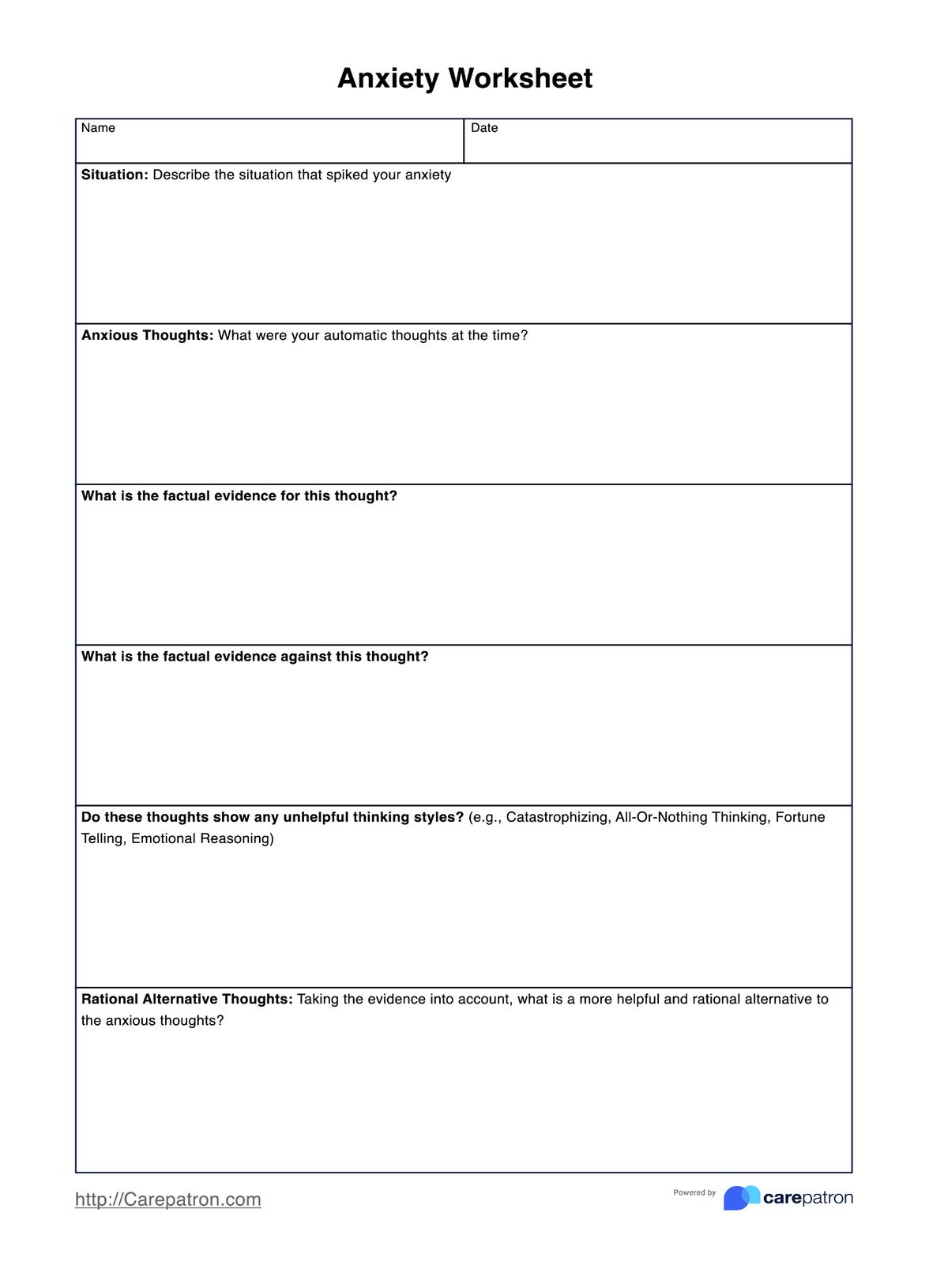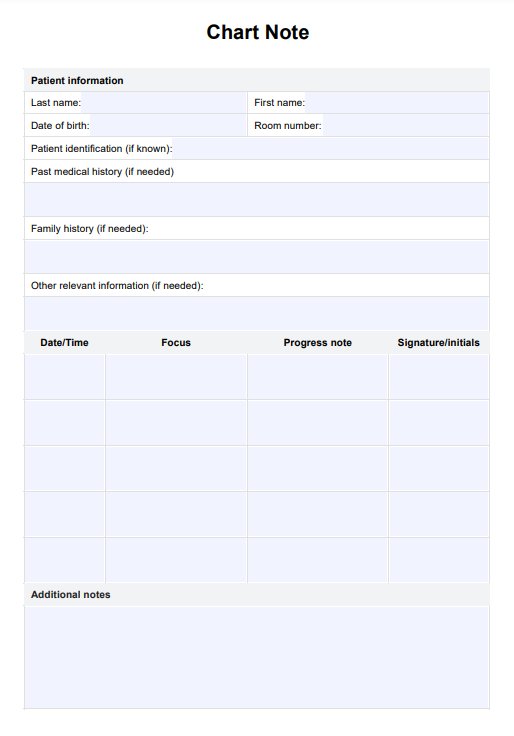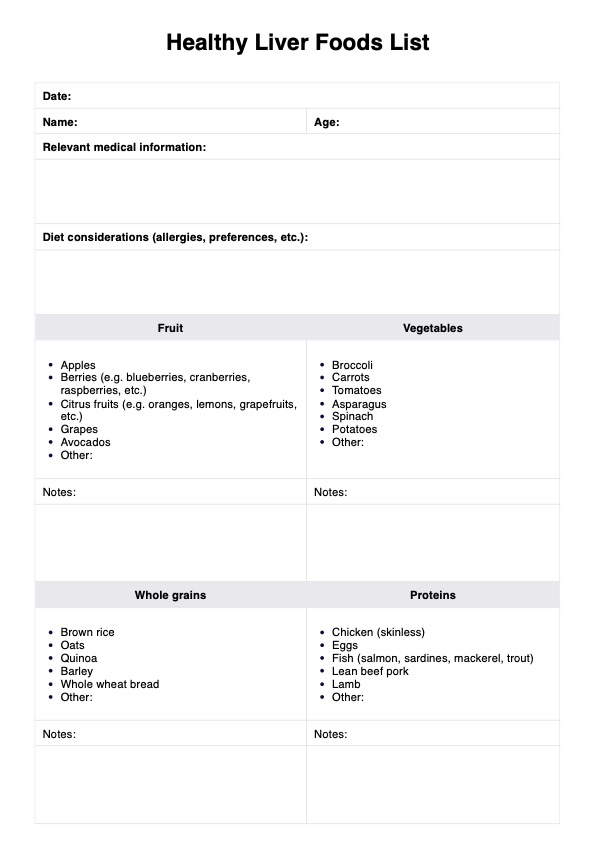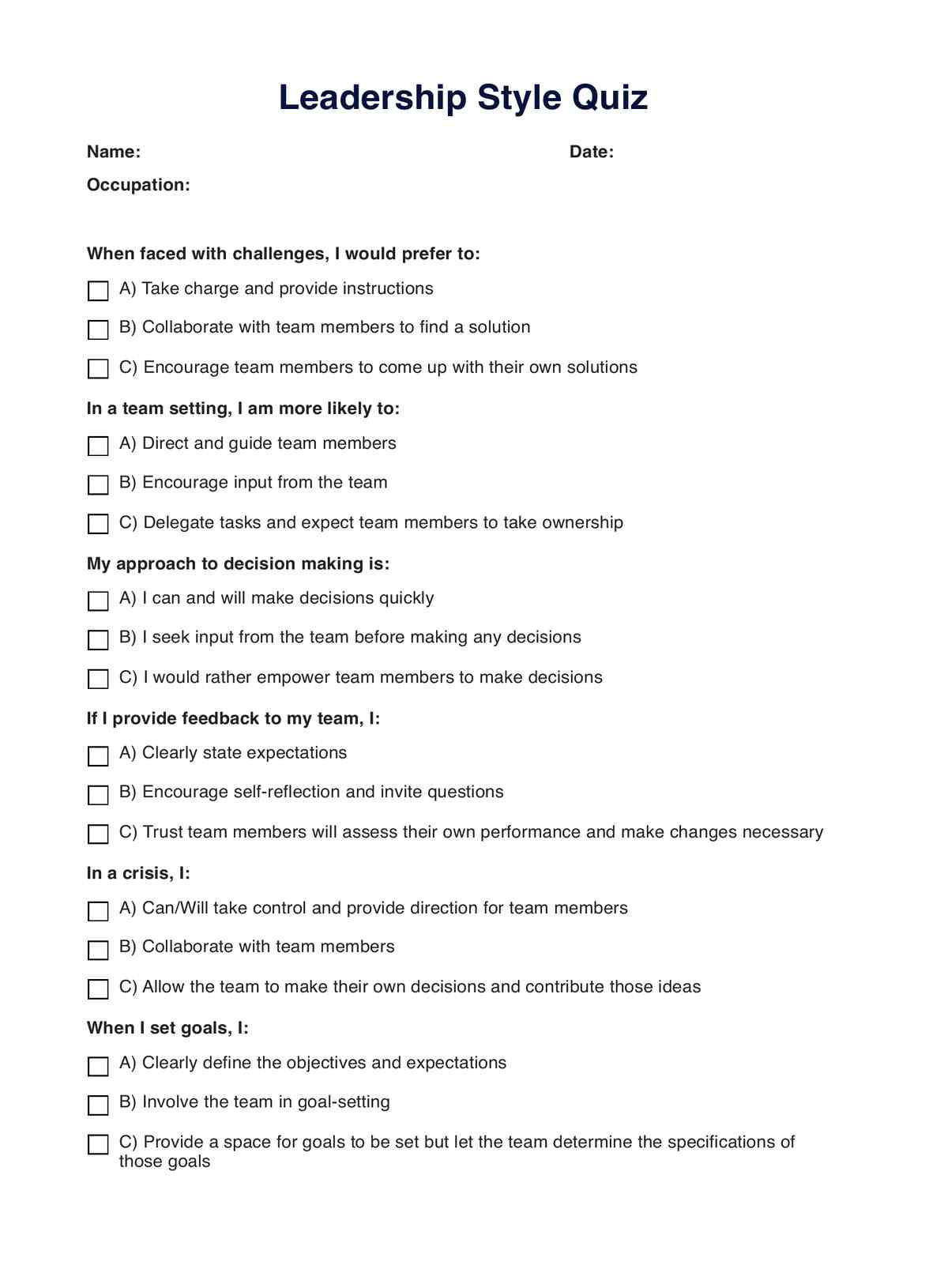Self-Monitoring Checklists
Discover the power of the Self-Monitoring Checklist. Learn how to use it effectively, its benefits, and why Carepatron is your go-to self-monitoring app.


What is a Self Monitoring Checklist?
A Self-Monitoring Checklist is a versatile tool to help individuals track and assess their own behavior or progress toward specific goals or objectives. It serves as a structured framework for self-reflection and accountability. This resource empowers individuals to take charge of their personal growth, health, education, and more.
A Self-Monitoring Checklist typically consists of a list of tasks or behaviors an individual aims to monitor. It provides a clear format for recording whether or not each task has been completed. By using this tool regularly, individuals can gain insights into their habits, make informed decisions, and ultimately achieve their desired outcomes.
A is a dynamic tool that empowers individuals to take control of their lives and goals. Whether striving for personal growth, academic success, improved health, or more effective project management, this resource is your compass on the journey to success. It's a structured framework designed to help you monitor and assess your own behavior and actions, fostering self-awareness and accountability.
Self-Monitoring Checklists Template
Self-Monitoring Checklists Example
How to use the Self-Monitoring Checklist
To harness the full potential of a Self Monitor Checklist, follow these steps:
Step 1: Set clear goals
The first step in effectively using a Self Monitor Checklist is clearly defining your goals. Your objectives may span various areas of life, from professional to personal. Be specific about what you want to achieve. Whether losing weight, taking an exam, or completing a project, having well-defined goals is essential.
Step 2: Customize your checklist
Tailor your checklist to suit your unique aspirations. This is where personalization comes into play. List the tasks or behaviors you must regularly self monitor to reach your goals. Make the checklist your own, reflecting your journey and priorities.
Step 3: Daily review
Commit to a regular review of your checklist. The frequency of this review may vary based on your goals and preferences. Daily, weekly, or another schedule that aligns with your objectives.
Step 4: Mark completed or not completed
For each task or behavior on your checklist, distinguish between "Completed" or "Not Completed" based on your actions or behaviors. This step is the heart of self-monitoring, where you assess your progress honestly and objectively.
Step 5: Reflect and adjust
Regular reflection on your checklist's data is vital. Use this reflection to make informed adjustments to your strategies. Celebrate your achievements and identify areas that require improvement. The Self-Monitor Checklist is a continuous feedback loop, allowing you to fine-tune your approach and inch closer to your goals.
When would you use this form?
A Self Monitoring Checklist is a versatile tool with applications across various contexts and professions. Here are some scenarios where you might find it invaluable:
Personal development
If you're on a journey of personal growth and self-improvement, a Self Monitoring Checklist can be your trusted companion. Use it to track daily habits, set achievable milestones, and hold yourself accountable. Whether you're working on becoming more organized, building better habits, or enhancing your emotional well-being, this form provides a structured approach to self-improvement.
Education
A Self Monitoring Checklist is an essential study tool for students and lifelong learners. It monitors study habits, assignment deadlines, and academic progress. Regularly updating the checklist ensures you stay on top of your coursework, manage your time effectively, and achieve academic success. It's beneficial during exam preparation and project submissions.
Health and fitness
A Self Monitoring Checklist can be a game-changer if you strive for a healthier lifestyle. Use it to manage weight loss goals, track your exercise routines, and monitor your nutrition. You gain a clearer picture of your health journey by recording your daily activities and habits. It empowers you to make informed diet, exercise, and overall well-being decisions. This tool can be especially helpful for those on fitness programs or managing chronic conditions.
Therapy
Therapists and individuals can utilize Self Monitoring Checklists to assess and manage emotional well-being in therapeutic settings. Patients can track their moods, thoughts, and behaviors, providing valuable data for therapy sessions. Therapists can gain insights into their patients' progress and tailor interventions accordingly. It fosters better communication and collaboration between therapists and clients. This also allows clients to understand their own behaviors as well as how to reach their desired behavior. Therapists can support individuals in understanding why the behavior occurs.
Project management
Project managers and teams can employ Self Monitoring Checklists in professional settings to keep projects on track. It's an effective way to track task completion, project milestones, and deadlines. By regularly updating the checklist, team members can ensure everyone is aligned with project goals and responsibilities. It promotes accountability and transparency within the team.
Benefits
Utilizing a Self Monitoring Checklist offers a multitude of benefits, each contributing significantly to personal and professional growth:
Increased accountability
A Self Monitoring Checklist is a daily reminder of your commitments. By marking tasks as completed or not completed, individuals become more accountable for their actions. It reinforces the importance of following through on your goals and tasks, fostering a strong sense of responsibility. This heightened sense of accountability can be a powerful motivator, encouraging you to work toward your objectives consistently. It can also support identifying individual needs. It can also teach discipline as well as control within oneself.
Improved self-awareness
Regularly reviewing and recording your actions and behaviors promotes self-awareness. It allows you to gain a deep understanding of your habits, tendencies, and patterns of behavior. This increased self-awareness can be transformative, as it empowers you to identify your strengths and areas for improvement. With this knowledge, you can make more informed decisions about adjusting your own behavior to align with your goals. It can also support development of your own executive functioning skills.
Goal achievement
One of the primary purposes of a Self Monitoring Checklist is to provide a structured path to achieving your objectives. It is a roadmap that outlines the specific tasks and behaviors required to reach your goals. Tracking your progress on the checklist ensures that you stay focused on your goals and measure your progress accurately. This can be idea for class period where there should be student self monitoring happening. Being able to self monitor also allows targeted behavior to be obtained through the use of intrinsic or extrinsic rewards.
This clarity and structure can be a game-changer, helping you break down larger goals into manageable steps and celebrate each milestone. It can support student self monitoring by being able to start paying attention, within general education, specific learning, and is a great way to measure student's progress.
Effective time management
Time management is a crucial skill in achieving any goal. A Self Monitoring Checklist encourages users to prioritize tasks and allocate their time more efficiently. It helps you identify the most critical actions that can be deferred or eliminated. As you become more adept at managing your time, you can ensure that essential activities are addressed promptly, maximizing your productivity and effectiveness.
Motivation
A Self Monitoring Checklist serves as a visual representation of your progress. Seeing tasks marked as completed on the checklist can be incredibly motivating. It provides tangible evidence of your efforts and accomplishments, which, in turn, boosts your confidence and self-esteem. This motivation can be a powerful force, helping you maintain enthusiasm and dedication to your goals, even in the face of challenges.
Data-driven decisions
The act of recording data on your Self Monitoring Checklist provides you with a valuable source of information. You can evaluate this data to gain insights into your behaviors and their impact on your progress. Armed with this information, you can make informed decisions about your strategy. For example, if you're tracking your diet and exercise, you can identify patterns that help you adjust your routines for better results.
This data-driven approach ensures that your actions align with your objectives and that you can adapt your strategies to succeed.
Commonly asked questions
Self Monitoring Checklists are used by individuals across various domains, including personal development, education, health, and project management.
Users regularly review and update the checklist, marking tasks as completed or not completed to track their progress.
It helps individuals stay accountable, gain self-awareness, achieve their goals, manage their time effectively, stay motivated, and make data-driven decisions.


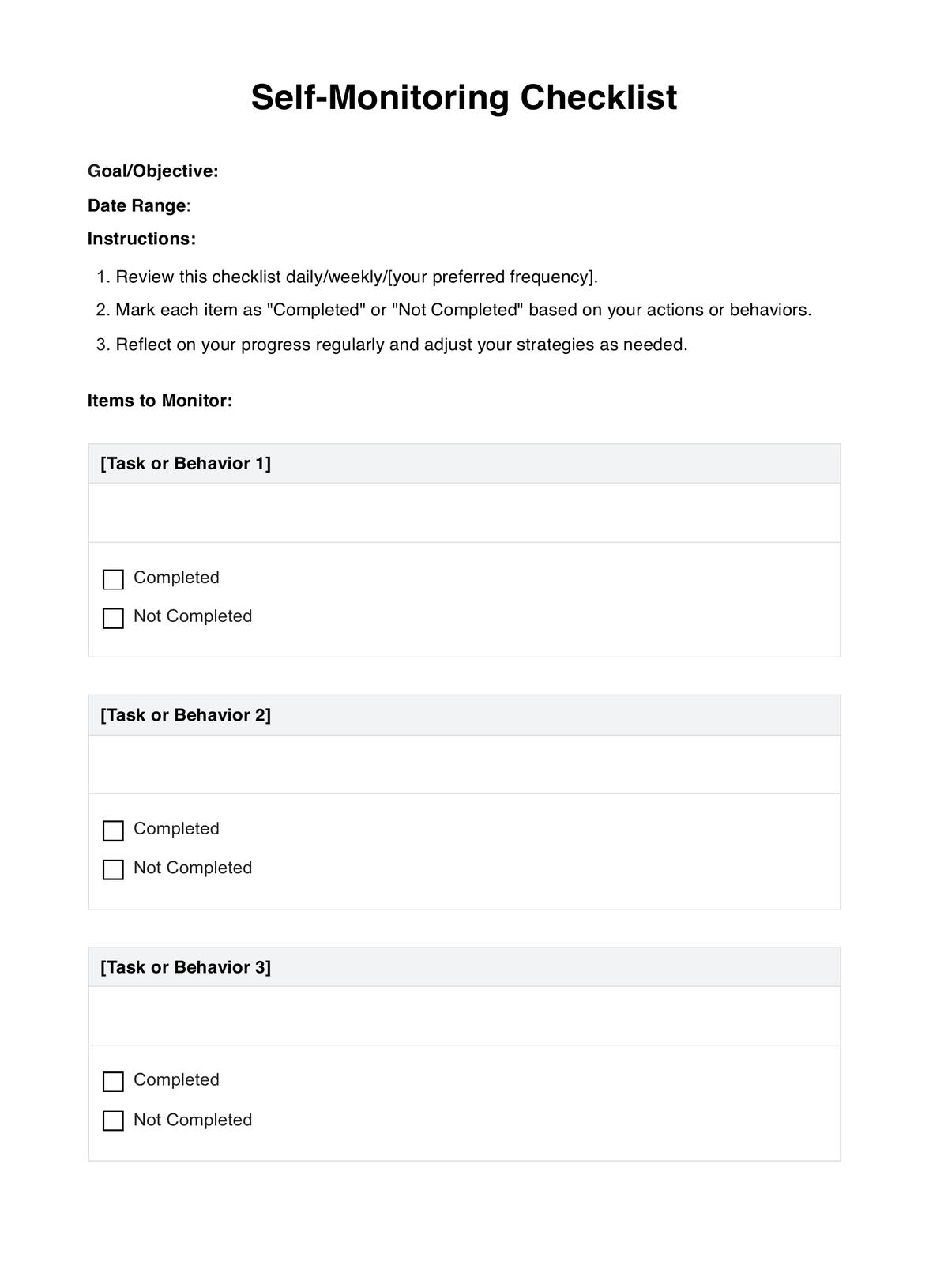
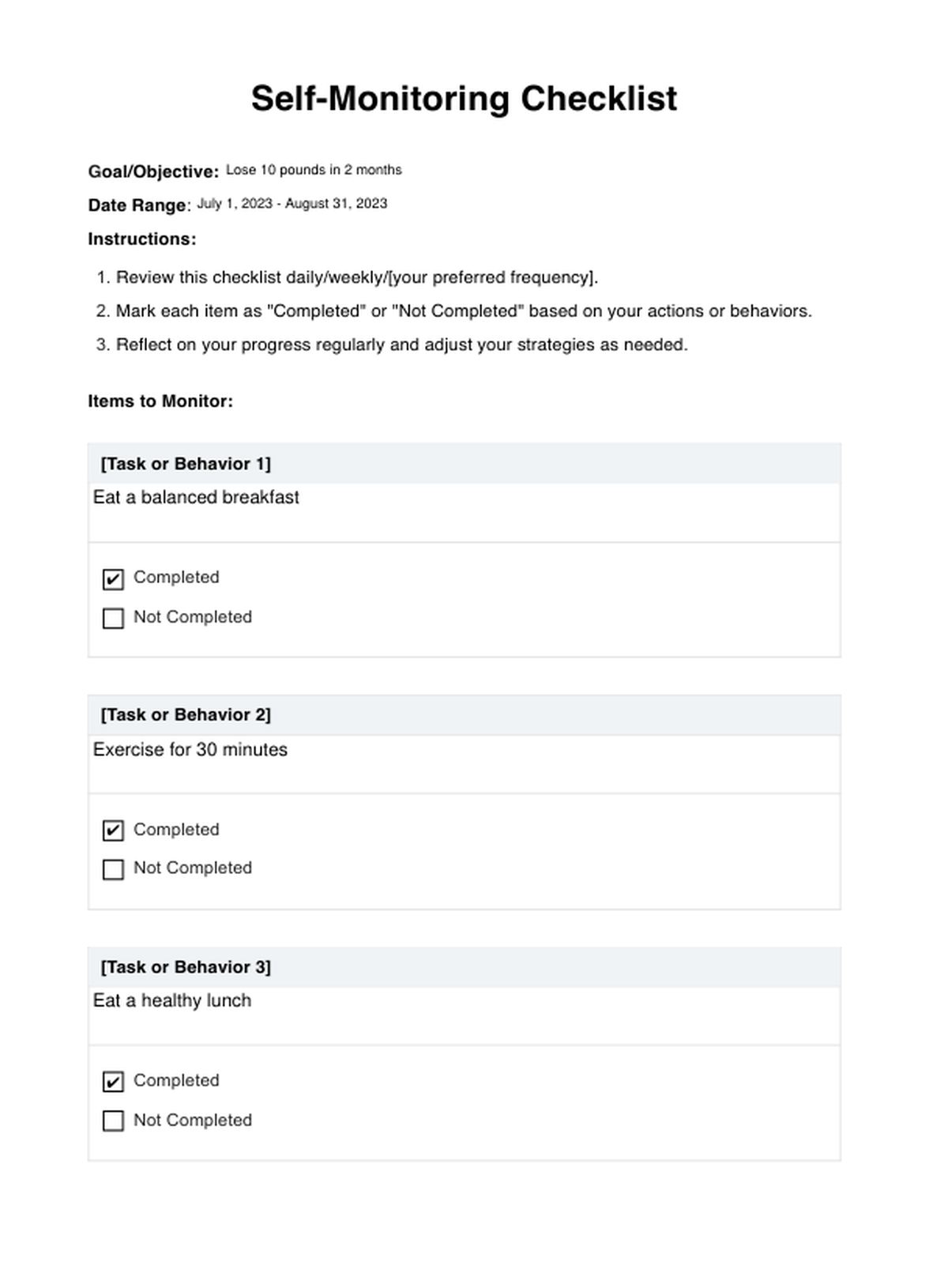

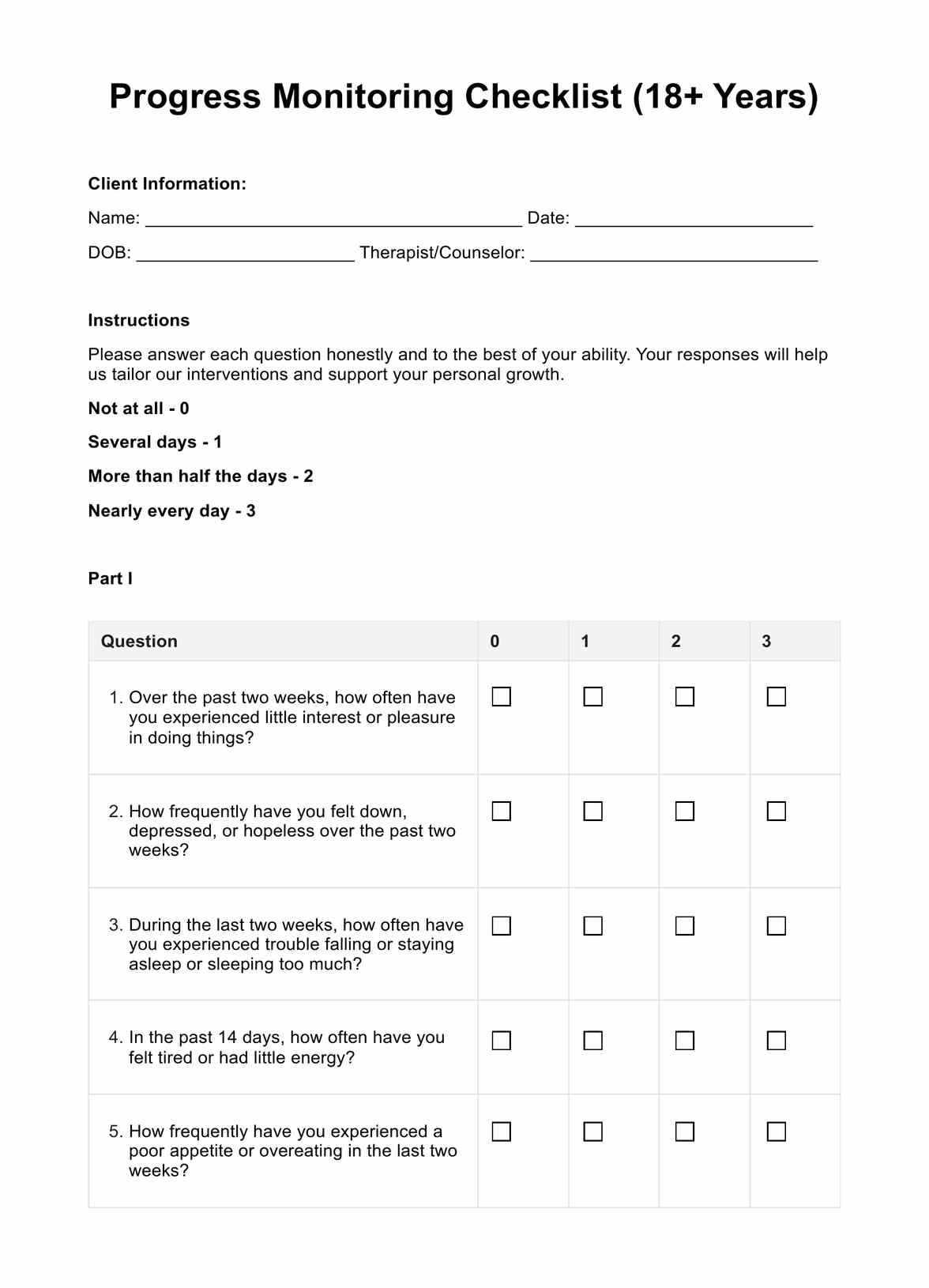












-template.jpg)























































































